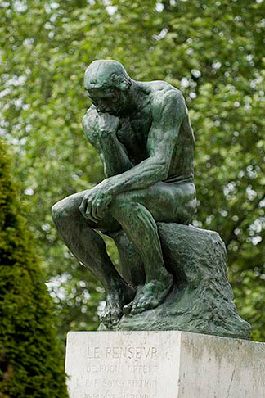Auguste Rodin

The narrative behind the sculpture is that during the Hundred Years War (started in 1337) between France and England, King Edward III offered the citizens of Calais their freedom and that of their city in exchange for the lives of six prominent City Councillors. Rodin chose to depict the councillors at the point where they believed they were to be executed. Edward did eventually spare their lives. The leader of the group was Eustache de Saint-Pierre, who is shown with a bowed head and bearded face and is placed towards the middle of the group.

(Photograph, Joan Hart)


For a detailed analysis of the sculpture please visit: https://www.khanacademy.org/humanities/ap-art-history/later-europe-and-americas/modernity-ap/a/rodin-the-burghers-of-calais

(Photograph: Musee Rodin)

(Photograph: The Trustees of the British Museum).





(Photograph by Christian Baraja) I will quote from the Musee Rodin to explain the work.
Adapting a mythological theme – the daughters of Danaos, or Danaïds, were made to fill up a bottomless barrel with water in punishment for killing their husbands on their wedding night – Rodin above all constructed a feminine landscape by highlighting the curve of the back and neck. Instead of representing the Danaïd in the act of filling the barrel, as in conventional iconography, Rodin depicts her despair as she realizes the pointlessness and absurdity of her task. Exhausted, she rests her head “like a huge sob” on her arm, while her outspread “liquid” hair, to quote Rilke, merges with the water from her overturned vase. The highly polished finish on the marble, carved by Jean Escoula, is in keeping with Rodin’s love of luminous modelling, without any shadowy hollows.(Ref: http://www.musee-rodin.fr/en/collections/sculptures/danaid)
Please visit the site of the Rodin Museum to enjoy the collection.
Tomorrow: Camille Claudel and for those of you who are not as familiar with her works I think you will be pleased.
